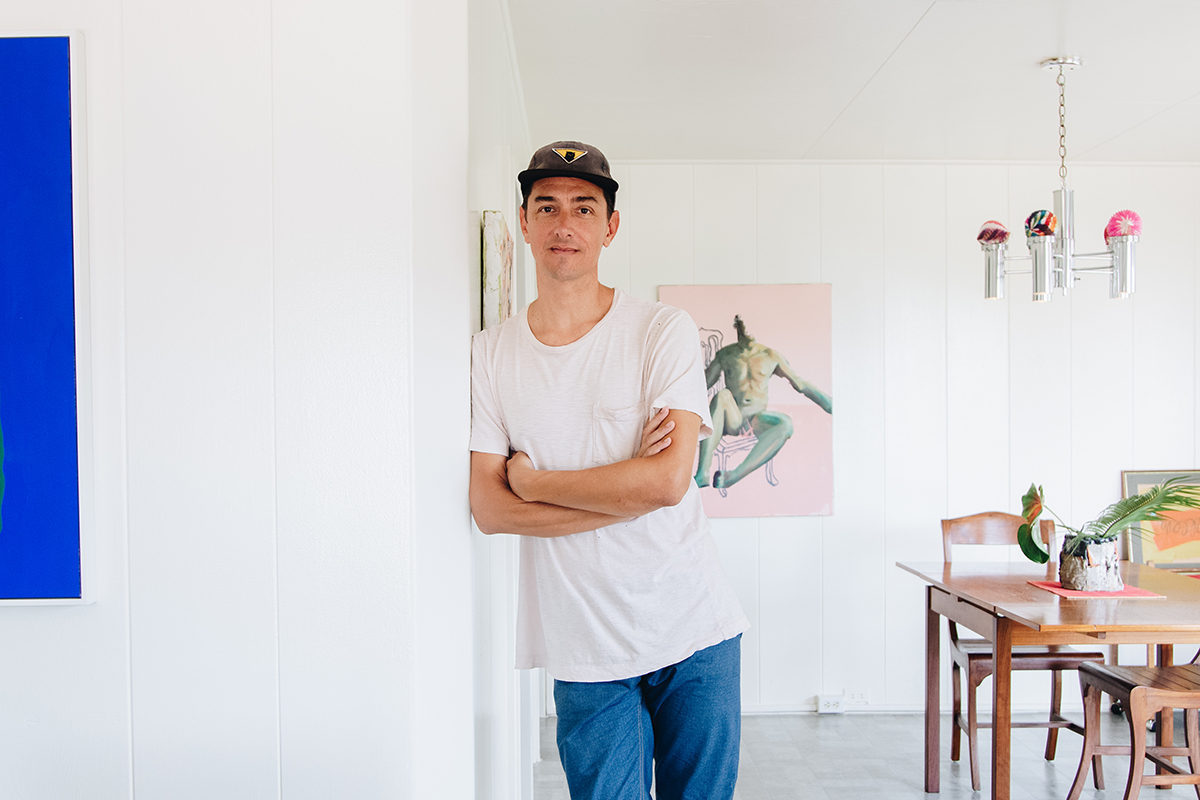Art enthusiast Donnie Cervantes aims to establish a cross-cultural exchange of ideas between local and visiting artists.
Text by Kylie Yamauchi
Donnie Cervantes greets me at the screen door of his home in Mānoa wearing an untucked button-up short-sleeve, blue shorts, and a small golden hoop in his ear. He invites me into his living area, which doubles as a personal gallery of contemporary art by his friends.
Overlooking the dining table is a painting of a faceless nude male sitting in a rigid posture with thighs outspread and contorted, handless arms.
Nearby, propped against a wall, is a canvas featuring a messily drawn spiral that could pass as a doodle. A lumpy cylindrical sculpture created by Amy Yao sits at the center of the dining table, turned so that the crudely etched face of a whiskered animal observes the room.
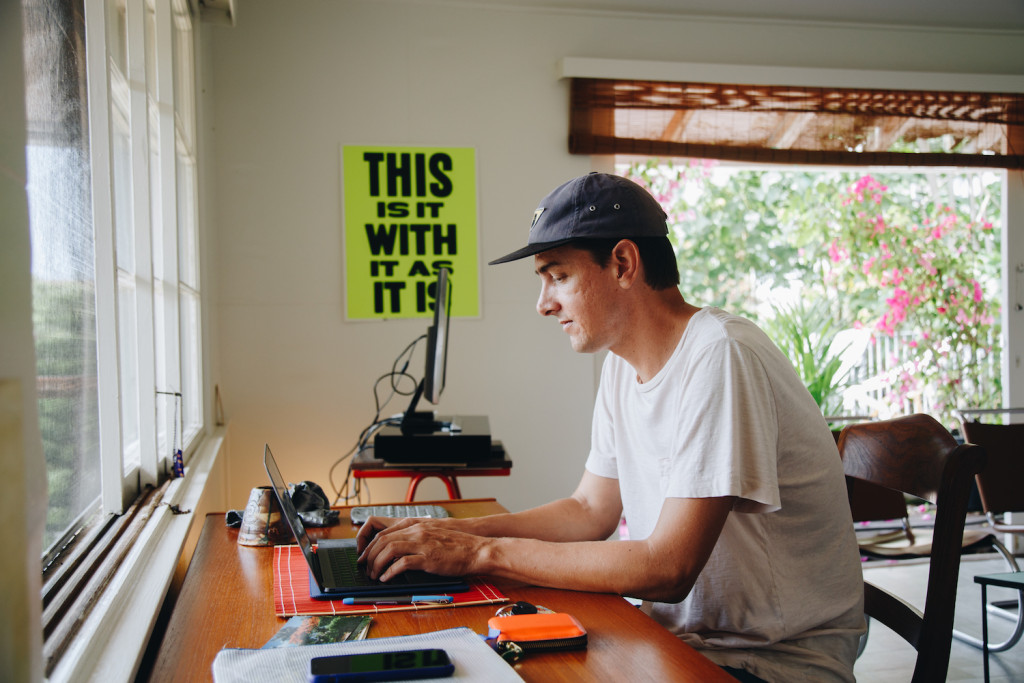
Cervantes moved to Honolulu in 2016, leaving his management job in the photography department at the University of Southern California but bringing with him an idea for an artist residency.
“In the first year that I was here, I was lucky to fall in with the right group of people as far as contemporary art goes,” the 42-year-old artist and arts organizer says. “Someone’s advice was to just be there, show up, and try to go to as many things as you can, before starting [any projects].”
He began as a visitor to Aupuni Place, a temporary communal space for creating and displaying art located in the since-demolished Ward Warehouse. Eventually he met its executive director, Maile Meyer, and the two developed its permanent location in Kakaʻako, Aupuni Space, where Cervantes is now director.
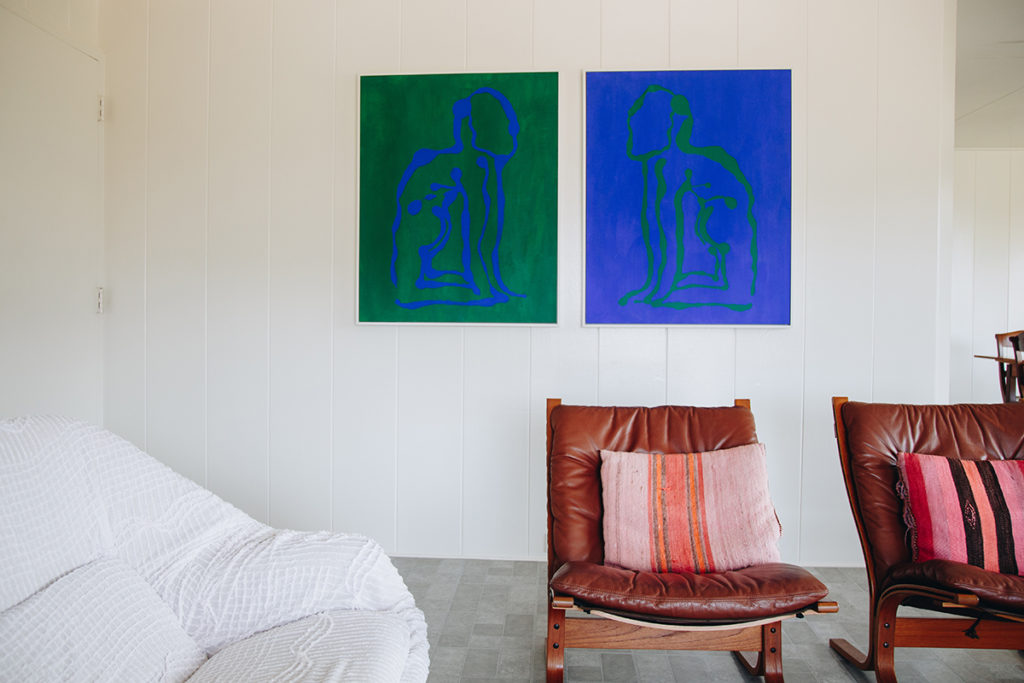
Having pursued photography in the bustling art environments of California and New York, Cervantes noticed a couple different elements of the Hawaiʻi scene that resulted from its isolated location.
“As an artist working here, you have the freedom to develop your own unique perspective because you’re not constantly influenced with what’s happening in the art scene [globally],” he says. “The hindrance is there is less communication, and you could be doing amazing things but no one is seeing it.”
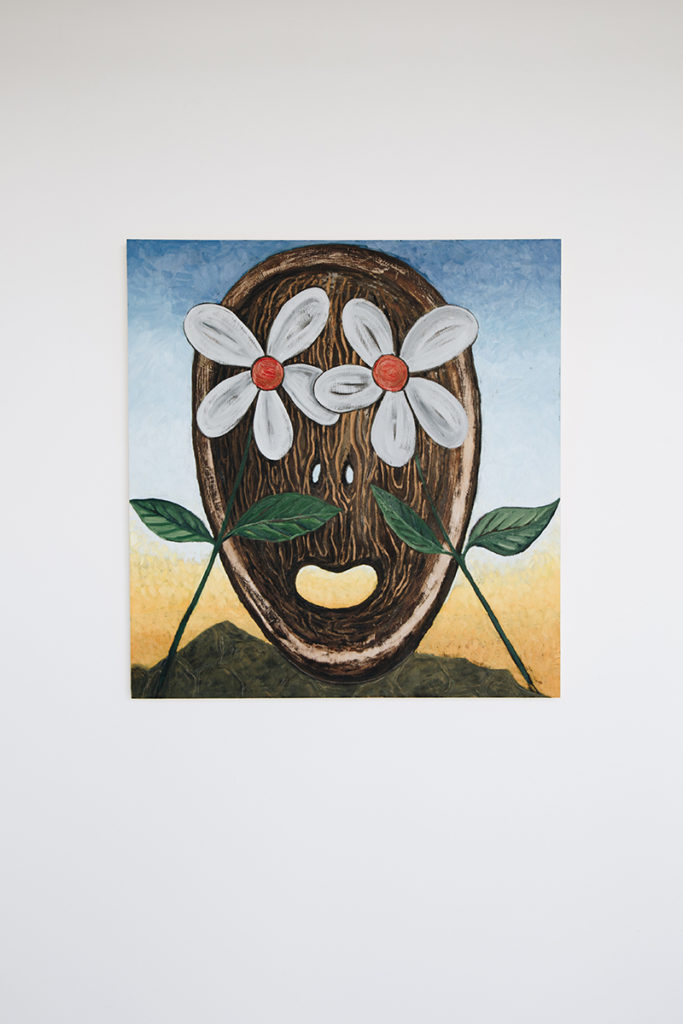
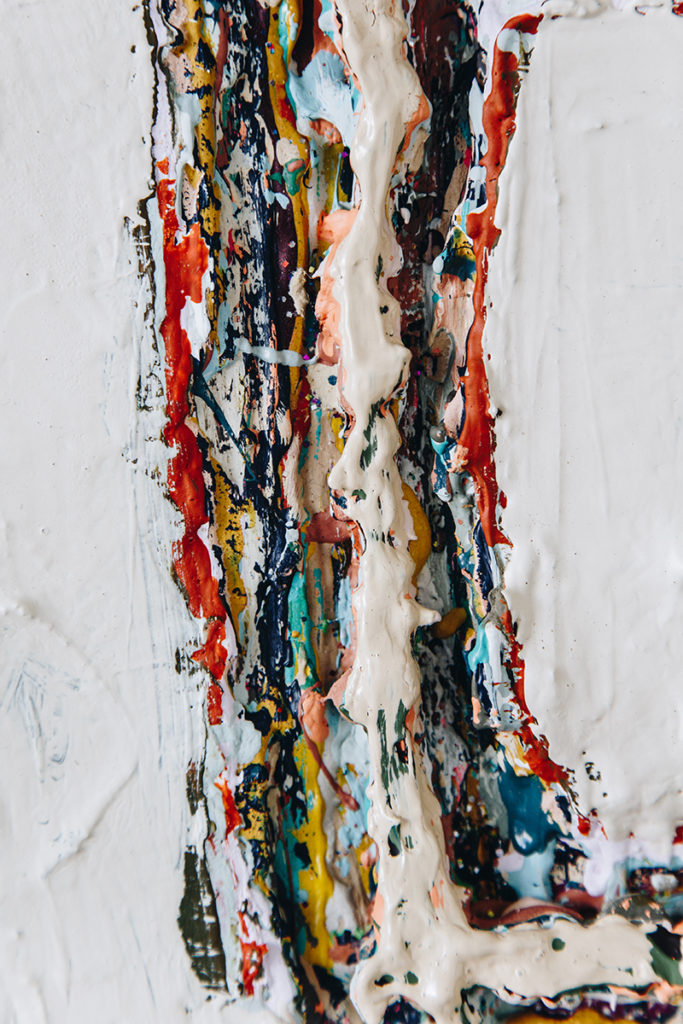
In 2017, to help address this, Cervantes and co-founder Aaron Wong launched Trades A.i.R., a visiting artist-in-residence program on Oʻahu, in partnership with the Honolulu Museum of Art and the department of art and art history at University of Hawaiʻi at Mānoa.
It aims to establish a cross-cultural exchange of ideas between local and visiting artists.
During stays of four to six weeks, national and international artists interact with areas of the local community that match their talents, which also allows local artists to network and showcase their own work.
“[The program] is not just about going off to the beach and painting outside,” Cervantes says. “We want there to be a certain rigor in what [visiting artists] participate in. Learning about what people do here is as important to Trades as the people here learning about the artist.”
As an artist working here, you have the freedom to develop your own unique perspective because you’re not constantly influenced with what’s happening in the art scene [globally].”
Donnie Cervantes
Trades’ inaugural artist, Amy Yao, whose work has been featured internationally, learned about the work of University of Hawaiʻi art students and local artists during her residency.
The second artist in residence, Michael Wang, worked with local environmental programs such as Hui Kū Maoli Ola Native Plant Nursery to develop his exhibition Extinct in the Wild, which focuses on critically endangered species.
The third and most recent visiting artist, Eve Fowler, used her experience as an arts organizer to collaborate with Aupuni Space. Similar to Yao, she interacted with UH art students and regularly worked on campus in a studio granted by the university.
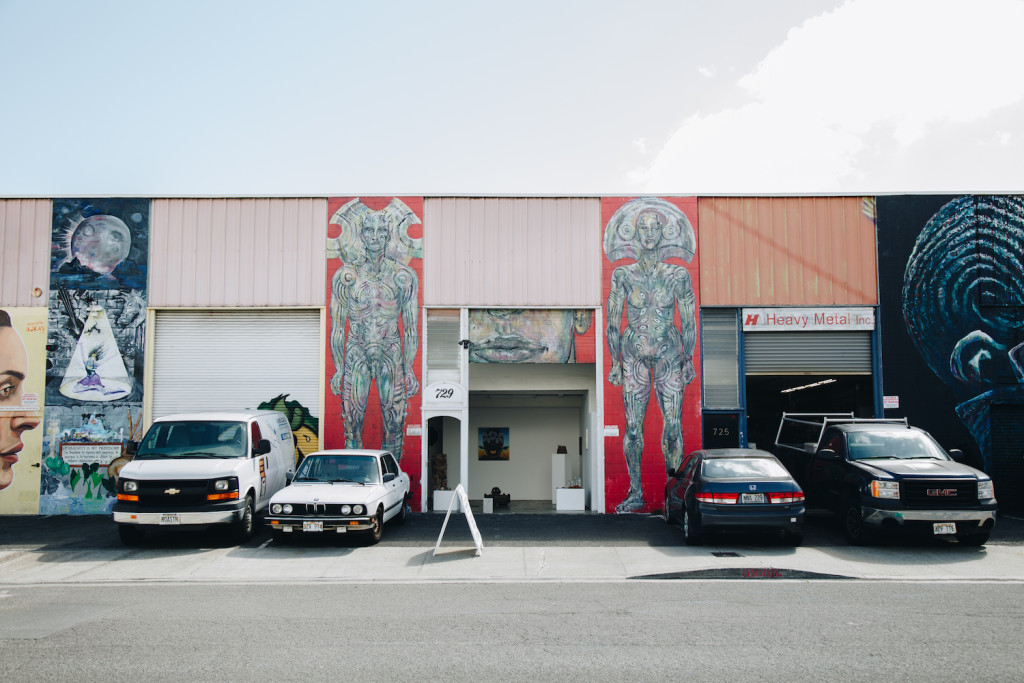
The most famous of Fowler’s work is a series of neon posters printed with boldly lettered quotes from 20th century writer Gertrude Stein, which were initially exhibited in public places around Los Angeles, on bus stops and sidewalk telephone poles.
One of these posters rests near the open balcony doors of Cervantes’ home. It reads, “This is it with it as it is.” The poster forms a dull neon spot in my peripheral vision that is hard to ignore, and it seems to have the same effect on Cervantes.
“Certain people might see me as queer or may not realize it,” he says. “Some people may look at this poster, and it’s kind of coded and kind of complex, and it’s not like this is just queer art.”
In what seems like an interpretation of the poster’s message, Cervantes adds, “I am the person I am, the things that I care about, the people that I care about, the good things that I try to do.”
Visit trades-air.com for more information and aupuni.space‘s latest exhibition at 729 Auahi Street in Kakaʻako.

